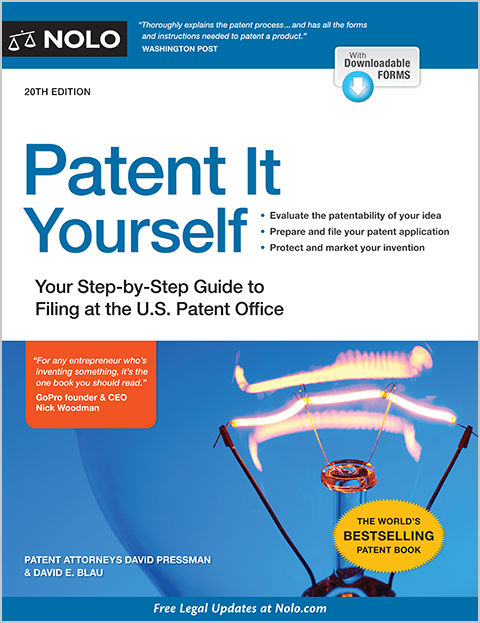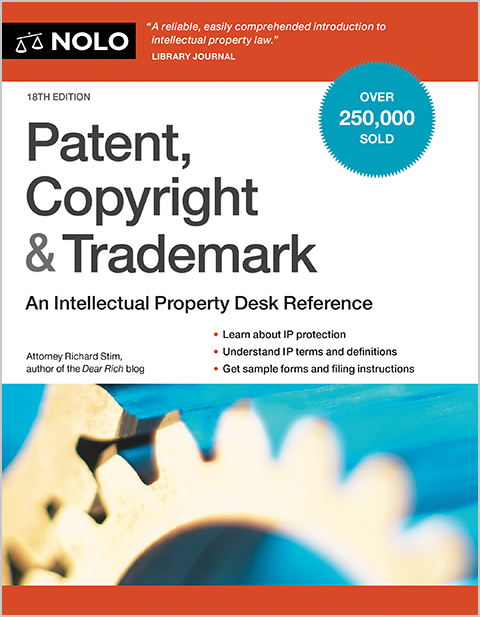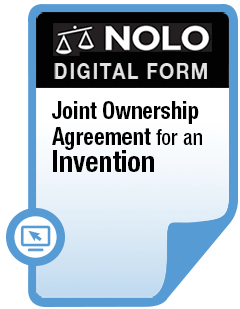A creator of a work generally owns the copyright in it, but the issue often isn’t that simple. Learn what copyright entails, who owns it when multiple parties are involved, and when someone else can acquire it.
As soon as you create a work—such as a poem, a painting, a song, or software—you own the copyright in that work. (The exception is when it's a "work made for hire," which we discuss below.)
The basic rules of copyright ownership are set forth in Section 201 of the Copyright Act of 1986 (17 U.S.C. § 201). In this article, we'll discuss the rights that make up copyright, initial ownership of the copyright, and transfers of copyright rights.
What Rights Does a Copyright Owner Have?
First, it's helpful to review the various exclusive rights granted to copyright holders by Section 106 of the Copyright Act (17 U.S.C. § 106):
- reproduction rights: the right to make copies
- distribution rights: the right to sell or otherwise distribute copies to the public
- right to create adaptations: the right to prepare new works based on the protected work (called "derivative works"), and
- performance and display rights: the rights to perform a protected work (such as a stage play) or to display a work in public.
This bundle of rights allows a copyright owner to be flexible when deciding how to commercialize the work; the owner may keep those rights, or as discussed below, sell, assign, or license any of the rights by contract.
Work Made for Hire: Copyright Ownership in Employment Relationships
A work made for hire is a work made by an employee in the course of their employment, or by an independent contractor under contract. (17 U.S.C. § 101 (2022).) In each case, the employer—or the hiring party in the case of an independent contractor—owns the copyright in the work.
Technically, the employer or hiring party is treated as the creator for copyright ownership purposes. In other words, the employer or hiring party owns the copyright in the work the moment it's created—the employee or independent contractor never owned any rights in it.
Work Created by an Employee in the Scope of Employment
A work created by an employee as part of their job is a work made for hire, and the employer automatically owns the copyright.
To understand what the "scope of employment" means for these purposes, it helps to look at an example. Suppose Ana is a graphic designer for a large museum. She creates invitations for the museum's galas, posters for the museum's shows, and designs for its website. Even though Ana did all of this work herself using her own skills and creativity, those tasks were part of her job. The museum owns the copyright to all of Ana's designs.
But assume that Ana has a side business in which she designs book covers for self-published authors. The museum owns no rights in the books covers, as they are clearly separate from, and thereby outside the scope of, Ana's museum job.
Many scope-of-employment questions are more complicated than this example, though. If an employer or employee is unsure whether certain work falls within the scope of employment, a conversation between the two is in order. A written agreement on this point now could save a lot of legal headaches down the road.
Work Created by an Independent Contractor Under Contract
A work made by an independent contractor is a work made for hire only if the contractor and the hiring party have a written agreement stating as much and the work falls into one of the following categories. The work must be one of the following:
- part of a larger literary work, such as an article in a magazine or a poem or story in an anthology
- part of a motion picture or other audiovisual work, such as a screenplay
- a translation
- a supplementary work such as an afterword, introduction, chart, editorial note, bibliography, appendix, or index
- a compilation
- an instructional text
- a test, or answer material for a test, or
- an atlas.
If the work falls under one of these categories, the hiring party must still have a written contract with the independent contractor stating that the work is work made for hire. The contract should include the phrase "work made for hire" (or "work for hire"). Some contracts expand the phrase to something along the lines of "work made for hire, as that term is defined under U.S. copyright law."
Copyright Ownership in Joint Works
Now that we've covered works made for hire, you might wonder about another copyright issue involving multiple parties: who owns the copyright when two or more people have contributed to a work.
What Is a Joint Work?
When two or more authors create something together with the intent to combine their contributions into a single, unified work, the work is considered "joint work," and its authors are joint copyright owners.
A song for which one partner writes the lyrics and the other partner sets the lyrics to music is a simple example of a joint work. If the two songwriters worked more collaboratively, literally writing the song together in the studio, with each contributing to the words and music, the song would also be a joint work.
How Do Joint Ownership Rights Work?
Each joint copyright owner has the right to register the work with the U.S. Copyright Office and to bring a lawsuit against third parties for copyright infringement. Unless the joint owners sign a written agreement to the contrary, each copyright owner has the right to commercially exploit the copyright, provided that the other copyright owners get an equal share of the proceeds. Joint owners can't, however, license exclusive rights in the work to third parties without the consent of the other joint owners.
Assignments and Other Complete Transfers of Copyrights
A copyright owner can transfer the copyright itself, sometimes described in the transfer document as "all right, title, and interest in the work, including all rights under copyright." This type of transfer is also known as an assignment of the copyright, and it is frequently done as part of a sale of the copyright.
Copyrights can be bought and sold in the United States, just like other property rights (such as real property, personal property, or rights under a contract). For example, a photographer can sell the copyright to a photograph to a magazine for a lump sum, or an artist can sell a design to a company for use as its website background.
If the work has been registered with the U.S. Copyright Office, the assignee should record an assignment of the copyright there.
Here are some other ways an entire copyright can be transferred:
- Mortgage or security. A copyright can be mortgaged or used as security for an obligation. This is somewhat rare for most copyright owners.
- Transfer upon death. In this situation, if an owner of a copyright dies, the copyright becomes an asset of their estate, to be inherited like any other property.
- Involuntary transfer. Under certain circumstances (for example, bankruptcy, mortgage foreclosure, or divorce), a court can order the transfer of copyright.
Limited Transfers of Rights: Commercialization Licenses
When a copyright owner wishes to commercially exploit their copyrighted work, they might work with a publisher or distributor to bring the work to market. Or they might grant adaptation rights, such as film adaptation rights, to a production company. These arrangements might include an assignment of the copyright, but more commonly they will involve a limited transfer of rights, known as a license.
For example, the owner may restrict the license:
- to a specific period of time (say, a three-year distribution license)
- a specific geographic territory, or
- certain media or platforms (such as hardcover books, desktop software, or Android devices).
A license can be exclusive or non-exclusive. If a license is exclusive, the copyright owner can't license those specific rights to another person or entity (or, usually, exercise those rights on their own).
For example, if you license exclusive North American publishing rights to your work to XYZ Publishing Inc., only XYZ Publishing can publish the work in the North America.
If the license is non-exclusive, the copyright owner can license the same rights to others. For example, you could license merchandising rights in your copyrighted photograph to multiple t-shirt companies.
For more information on licensing copyrighted works, including exclusive licensing, see Should You License or Assign Your Art?
Talk to a Lawyer
Need a lawyer? Start here.
How it Works
- Briefly tell us about your case
- Provide your contact information
- Choose attorneys to contact you
- Briefly tell us about your case
- Provide your contact information
- Choose attorneys to contact you



